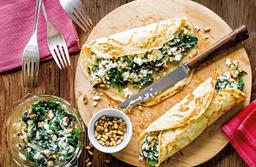
Entertainment


It's 2pm on a Monday and I've just had four shots of whiskey.
It was for journalism's sake, I swear. I'm at the Irish Whiskey Museum, at the end of their forty-five minute tour. After passing through a reconstructed 'shebeen' and distillery, a Victorian bar and a recreation of a rural wake, the trail culminates in a glassy, futuristic room where a giant bottle of Jameson pours amber liquid over gigantic ice cubes, a literal whiskey fountain. We've seen the past and this apparently represents the future: an eternal font of whiskey, pouring in aeternum for generations to come.

Just as I edge a little closer to judge whether the fountain is actually pouring whiskey or some lesser liquid substitute, a whiskey expert appears behind the bar . He gives each of us four small glasses and a tiny jug of water. We are going to drink the whiskeys with water and without, and compare them, and I am going to try very hard to stay sober.
This is tourist Dublin, which for Dubliners is kept distant and yet remains so alarmingly close in daily life. How many times have you directed someone to the Book of Kells or the Guinness Storehouse? How many of us have been shrieked at by Vikings from a ship on wheels, expecting us to call back to them in Irish, or perhaps some form of Old Norse?
I remember being brought on distillery tours when I was in transition year (We were given orange juice instead of Guinness, I recall. Is this normal, or was my school just weird?) but aside from that it's a facet of the city's identity I carefully avoid.
But the whiskey museum, to its credit, is un-touristy. Before the tour I sit in their small cafe looking out over Trinity College. It's peaceful and quiet and they've avoided any use of the colour green. There's taxidermy in the bathrooms and wood panelling everywhere, self-conscious kitsch for the kind of people inspired to drink whiskey by Mad Men or trips to VCC and the Liquor Rooms.

At some point this year they're planning to open up a whiskey bar, too. But for now there's just the cafe and the museum, and because it's Monday and the middle of the day there are only three of us on the tour. I join an American and his Swedish daughter. The American is very, very into his whiskey, while his daughter sits by without comment. He pauses to ask about grains and provenance, and the difference between an Angel's Share and a Fairy's Share. He reels off names of distilleries lost in time.
It becomes increasingly apparent that whiskey is how he relates to Ireland in general: this man's first awareness of our country was through bottles of Paddy and Tullamore Dew. Midway through the tour we are sitting in the 'wake room' (it takes me a few minutes to realise that our tour guide is leaning against a wooden coffin on stilts, rather than a table), the American starts talking about how his family name is Murphy, and how he has traced one branch of his family to a whiskey distillery near Armagh.
It's strange thinking that this is how Ireland represents itself to the world. So often I despise the commodified craic we export, the idea that it's ok to come here once a year in March and trash the city, vomiting in our gutters wearing appropriated pound-shop kilts. Alcohol might support our economy, but it destroys Irish people's ability to be taken seriously abroad. Throughout the time I lived in England, I collected the bad jokes to prove it.
But there's something a little more dignified about whiskey, especially in that the people who champion it these days do so as a marker of taste, maybe even in rebellion against those who knock back pints in Temple Bar. I can't see the stag do crowd getting anything out of this very charming place, where we sit in a reconstruction of a traditional bar surrounded by vintage bottles and glasses, while talking portraits of figures from historical brewing families argue from opposite walls (they're actually screens showing actors–this Harry Potter-ish touch was one of my favourite parts of the tour, I can't help but feel all history lessons can benefit from the use of talking Victorian portraits...).

I learn a lot of odd facts which I hope to one day relay to a pub quiz machine. We learn about whiskey's use as a treatment for the bubonic plague (not too effective), its role in charming Queen Elizabeth when she kidnapped Grace O'Malley's sons (very effective), its appearance in the Johnson dictionary of 1775, and of the existence of whiskey queen Ellen Jane Corrigan, who brought electricity to Bushmills in the 1880s.
All of which will help me sound like a person who knows about whiskey in future. Though I'm not much good at tasting it: at that final, glassy room with the whiskey fountain and the four little glasses to be sampled, I can barely finish drinking them. Whiskey Expert (I never caught his name) asks me if I'm alright–I must be scrunching my face up from the bitterness. Apparently the blend I'm drinking has 'creamy with notes of spiced pear', though I'm missing them (shout out to all the pear, though).
I'm a little dizzy, if not drunk, by the time I descend the metal steps back out onto college green. Another tour is starting. I leave feeling convinced that to appreciate Irish whiskey is a kind of national service. One which I have failed at, though the attempt was very enjoyable.

Savoury Pancakes Are Objectively Superior

Entertainment
Stephens Day is Lowkey the best Day of the Christmas

Entertainment
Savoury Pancakes Are Objectively Superior
Entertainment
Stephens Day is Lowkey the best Day of the Christmas
Entertainment
10 types of people you’ll see in Irish delis
Entertainment